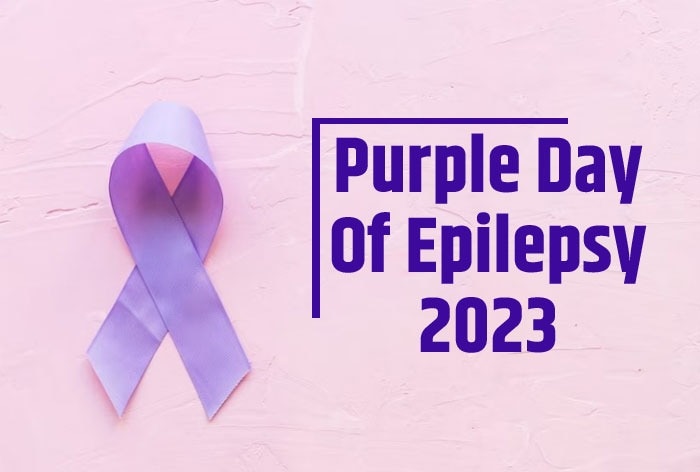Purple Epilepsy Day 2023: Epilepsy is a neurological condition that is stigmatized in many countries. This day is commemorated to raise awareness about epilepsy and the need to build a more empathetic environment around it.
Purple Epilepsy Day 2023: What exactly is epilepsy? Epilepsy is a neurological condition that causes seizures. It is a chronic, non-communicable disease that occurs when there is abnormal electrical activity in the brain. It can lead to recurrent seizures. Since 2008, Purple Epilepsy Day has been celebrated on March 26 to raise awareness about epilepsy. According to the World Health Organization, about 50 million people worldwide have epilepsy, making it one of the most common neurological diseases globally. The risk of premature death in people with epilepsy is up to three times higher than in the general population.
Purple Epilepsy Day 2023: History, Importance
It was first organized by Cassidy Megan from Canada on March 26, 2008. Motivated by her personal experience, Megan decided to raise awareness about epilepsy by engaging people in conversations, conventions, and campaigns.
Not many people have a clear understanding of this neurological disease and societies have also built certain stigmas around it. In order to spread more information about seizures and break stereotypes.
I wonder why it’s purple though. Lavender has been internationally associated as an epilepsy flower.
Is epilepsy related to premature death?
People with epilepsy are at increased risk of premature death, according to a new study leading up to Purple Day. The study, published in the journal Neurology, showed that people with epilepsy had more than double the risk of death compared to the general population. The increased risk was even higher in younger people in the study of 20,095 epilepsy patients.
The increased risk also varies depending on where they live, how much medication they take and what other diseases they may have, the researchers said.
“Our research found an increased risk even among those who have no other health problems and are taking only one medication to control their seizures,” said study author Seo-Young Lee, MD, PhD, of Kangwon National University in Chuncheon, South Korea. .
Citing Ravindra Srivastava, Director of Neurosciences at Primus Super Specialty Hospital, India, IANS reported that, “If you notice someone having a seizure, it is essential to remain calm and keep the person safe, protect the person’s head, turn it on at your side to help prevent choking, time the seizure, don’t hold the person down, and stay with them until they are fully alert and oriented,” Srivastava said.
Signs, symptoms and prevention of epilepsy
There are also different types of seizures, focal and generalized. In focal seizures, only one area is affected, while generalized seizures affect the entire brain. There are other subtypes of generalized seizures: tonic, clonic, atonic, absence, and miclonic seizures.
However, some generic symptoms are:
- temporary confusion
- a look spell
- stiff muscles
- Uncontrollable jerking movements of arms and legs.
- Loss of consciousness or consciousness
- Psychological symptoms such as fear, anxiety
Lifestyle changes to control and prevent epilepsy
If you already have epilepsy, it’s important to get a good amount of quality sleep.
- Fatigue can be a trigger, so get plenty of rest.
- Refrain from substance abuse such as drug or alcohol use
- Maintain a healthy lifestyle with good nutrition and physical activity.
- Exercise regularly. You can also do yoga to relieve stress.
- Take the medication on time
- Keep hydrated
However, in the event of a seizure episode, it is best to have a medical examination and chart the subsequent course of action based on the advice of a medical professional.
Note: This article is to disseminate generic information about epilepsy and does not replace the advice and medication of a doctor.
$(document).ready(function(){
$(‘#commentbtn’).on(“click”,function(){
(function(d, s, id) {
var js, fjs = d.getElementsByTagName(s)[0];
if (d.getElementById(id)) return;
js = d.createElement(s); js.id = id;
js.src = “//connect.facebook.net/en_US/all.js#xfbml=1&appId=178196885542208”;
fjs.parentNode.insertBefore(js, fjs);
}(document, ‘script’, ‘facebook-jssdk’));
$(“.cmntbox”).toggle();
});
});
